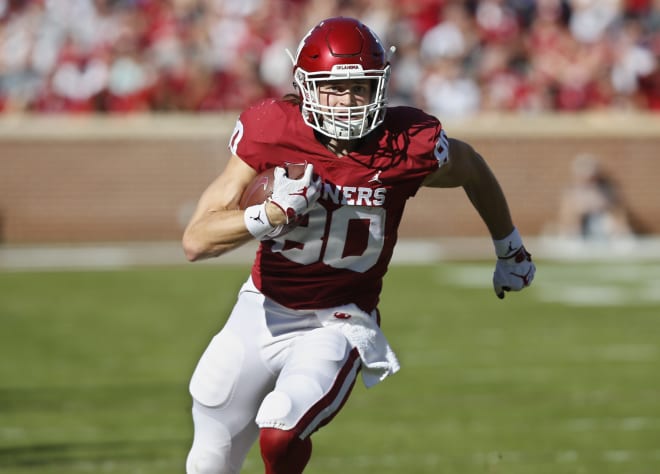Take Two: Is Oklahoma starting a trend by embracing versatility?

Take Two returns with a daily offering tackling an issue in the college football landscape. Rivals.com National Recruiting Analyst Adam Gorney lays out the situation and then receives takes from Rivals.com National Recruiting Director Mike Farrell and an expert from the Rivals.com network of team sites or a regional analyst.
MORE TAKE TWO: Is five-star Justin Rogers a Tennessee lean? | Will Reggie Grimes go with in-state Vols or end up at Alabama?
STORYLINE
Some years ago, Mark Andrews swore up and down that he was going to play receiver in college. He went to Oklahoma and the coaches immediately converted him to tight end.
In the last few recruiting classes, the Sooners have taken three athletes from the state of Texas. A couple years ago, four-star Grant Calcaterra was a 6-foot-4, 215-pound prospect who played receiver and defense at Rancho Santa Margarita (Calif.) Santa Margarita Catholic and he’s now playing tight end in Norman - and excelling.
This cycle, Oklahoma already has a commitment from four-star Drew Sanders, a 6-foot-5, 212-pound recruit from Denton (Texas) Ryan who could be the next star tight end, but he has also shown tremendous ability on the defensive side of the ball.
The Sooners recently offered Blayne Toll, a 6-foot-5, 242-pound three-star prospect who’s rated as the second-best player in Arkansas. On a visit this past weekend, the Oklahoma coaches told four-star LB Jordan Banks from Harbor City (Calif.) Narbonne that he could play one of four positions on defense.
This has become a growing trend under third-year coach Lincoln Riley - bring in talented, big-bodied athletes and find a spot for them, if they’re open to it, whether it’s on offense or defense.
Will this be a new trend we see in college football - like the growing importance of hybrid linebackers/defensive ends or running backs not looking for a ton of carries to keep tread on their tires for the NFL? Or is this unique only to how Oklahoma looks at recruiting players?
FIRST TAKE: JOSH MCCUISTION, SOONERSCOOP.COM
“In the case of Toll, they like him defensively. I don’t know if they’ve said, ‘OK, this is going to be his role.’ There is still a lot of flux on how they want to deploy him. I think he’s a defensive end or a rush guy for Oklahoma, but I don’t think it's nailed down.
“In the case of Sanders, it’s pretty open. When he committed, the idea was he would be a tight end, but as time has gone on and they’ve had more time to watch him, he was so good on defense last season they kind of said, ‘Let’s see how this plays out.’ They want him to be part of the conversation as well. He’s one of the guys where they say, ‘Let’s see how he does, let’s see what our needs are.’ That kind of thing. It’s gone the same way for him because at first he was saying tight end, but the more you speak to him it’s more about what gets him on the field.
“This is something Riley has been big about since he arrived and it’s something he’s used a lot on offense with guys like Dimitri Flowers and Brayden Willis, who should play a big role for Oklahoma this year. Andrews, a lot of people said he was a wide receiver, Oklahoma wanted him as a tight end. Period. It’s not a novel idea for OU, but it’s something they focused on and said, ‘We want big, athletic guys and we’ll let their position figure itself out. We can find a way to use a guy who’s big and fast.’ ”
SECOND TAKE: MIKE FARRELL, RIVALS.COM
“You have to have a kid who’s open to that or he doesn’t really know which position he wants to play or it really doesn’t matter that much to him. Most kids want to play a specific position. If they could be a wide receiver or a defensive back, but they’re set on being a wide receiver, you better never mention defense to him.
“The more versatile your players are in your class, the better your class is going to be. There is less of a chance to bust out. If a kid can only play one position and he’s not good at it or not good enough, you’re done. If you can get a kid who’s athletic, try him out at one position and it doesn’t work out, flip him around to defense and he can hold his own, that’s a big advantage. I just don’t think it’s something you can do that often. It depends on the kid and they have to have the right temperament.”
